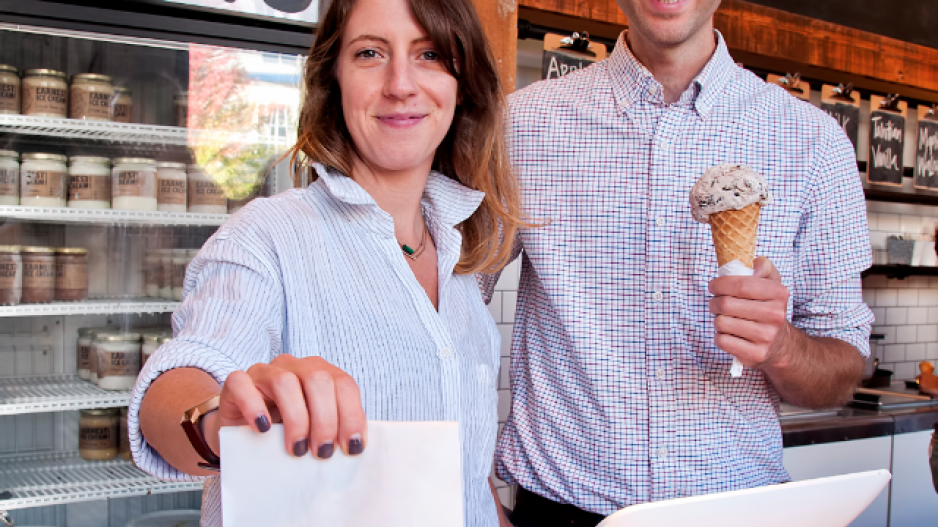On hot summer afternoons in Vancouver, Ben Ernst can’t help but notice how everyone in the city gets the same idea all at once.
It’s those days when the founder of Earnest Ice Cream finds customers lining up on the sidewalks to get into his shops on Fraser Street and Quebec Street.
“Oftentimes, we’re doing a couple of transactions in the span of 30 seconds,” he said. “And that needs to happen absolutely reliably, without fail.”
The ice cream company, which produces all the products it sells, was preparing to launch in 2013 and Ernst was determined to go digital in all possible aspects of his business. That meant investing in bulky, expensive cash registers wasn’t in the conversation.
Instead, Earnest Ice Cream processes all purchases through Square, a point-of-sale tool providing hardware and software to merchants. Customers swipe their cards through a Square device, and the transaction is processed on an iPad. No cash registers.
“It was pretty early on that we knew that’s how it would work,” said Ernst, 36. “It’s almost like that’s what our generation is doing.”
Rod Hsu, president of Vancouver-based digital payments service nTrust, said there’s a notable generation gap among entrepreneurs when it comes to adopting new technologies.
“Especially young generations … they’ve grown up in the era of apps and mobile. It almost becomes second nature to them.”
Older merchants understand it’s important to adopt new technologies to keep costs low and keep up with customers’ changing expectations, but Hsu said there is also a “sense of fear because it’s an unknown area.”
In Vancouver alone, local startups like PayWith, Payso and Payfirma are providing customers with different mobile payment options.
Hsu said the hundreds of options being developed across the globe can be overwhelming, which is why nTrust has been offering incentives like $10,000 in free processing so merchants can test out the service before committing.
“Mobile payments is a little bit of a mess for merchants because they don’t quite understand what it means yet,” said PayWith CEO David Strebinger. “There are so many different ways and so many different things that you could describe as mobile payments that it’s still kind of the Wild West.”
He said the key is making it a better experience for both merchants and customers. Half of PayWith’s business is focused on providing companies with loyalty programs and promotions linked to its mobile payments service.
Apps will reward customers for sharing their experiences with companies on social media, while businesses will be able to track the success of those campaigns.
Strebinger said the big challenge for small-business owners is they’re often the ones behind the counter, working the kitchen, serving the food and handling the financials.
“They’re not really focused on the marketing side, the advertising side. They don’t have a department of people who are thinking of new ways to market and advertise and drive new business.”




